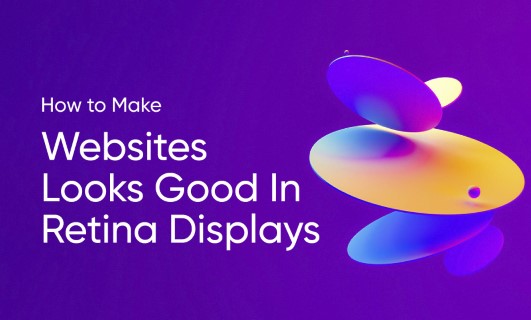Apple’s Retina Displays have about twice the pixel density as compared to traditional displays, which means that the images in your website could appear pixilated and ugly if you do not take immediate action. Ordinary graphics, especially those logos and icons can actually look fuzzy, particularly on high-resolution screens. Also, most images on the site which aren’t designed for Retina displays will appear blurry.
While it is true that not everyone has a Retina Display, and that it is only available in high-end devices, you have to keep in mind that people are becoming even more sophisticated and they always aim to innovate. If you own a website, either for business or for personal purposes, making it look good on Retina Displays is vital for overall success.
To be able to solve this problem, you have to serve a larger and higher quality image to Retina Displays. Here are some of the most valuable ways to make your websites look good on Retina Displays.
Using the CSS3 and SVGs Effects
The use of the effects of the Scalable Vector Graphics can solve the problem. No matter how big the SVG becomes, it will remain smooth. This is because it is designed using vectors, including shapes and lines and not with the use of individual pixels. While SVG may not be ideal for photographs, it plays a vital role for charts, diagrams and logos. If you prefer, you can also replace some images. For instance, shadows, corners, gradients and titles can be reproduced with the use of CSS3.
Using the CSS Sprites
Another valuable method you can employ in order to serve responsive Retina images it the use of CSS Sprites. To be able to cater for those high-resolution displays, you will need 2 images – a high resolution image and a normal resolution. This actually means having a double number of selectors, files as well as references in your CSS.
Nevertheless, when using CSS Sprite, you have to override the link to the normal resolution sprite file for the entire selectors including the high-resolution assets. Such technique will reduce stylesheet file size and network requests, which is an effective process for making Retina Assets.
Using the Webfonts Icons
Just the same with the SVGs, fonts are also vectors, so they are scalable, which means that you can use font sets that contain icons. They are perfect for small and frequently used shapes, which include social media logos, telephones, email envelopes and widget controls. There are some other commercial as well as free icon font sets that you can take advantage of such as, Font Awesome, Foundation, iconic and Typicons.
Here are some of the common ways you can consider to make your website look good on Retina Displays. If you want to ensure that all your site images will look appealing on Retina Displays, you just need to become practical and keep things simple. Never spend so much time trying to solve those minor issues on devices with few users. Choose the right process and work with the experts such as www.sweans.com.
My true passion lies in learning and development. My vision as a writer is to deliver the content to people who would desire to read something fruitful. By making content as the true king, I would be able to reach this goal. I also embed my passion for research and creativity to fulfill the goal.







